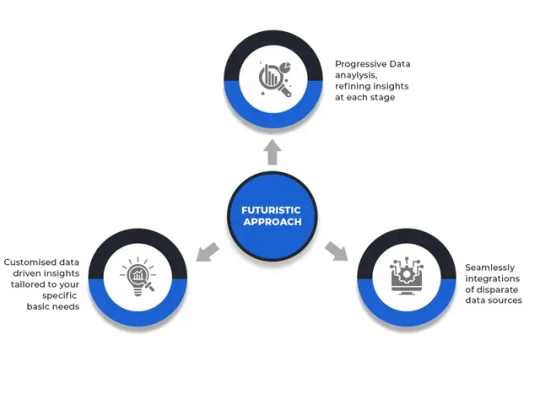#machine learning in supply chain
Explore tagged Tumblr posts
Text
Enhance Efficiency with ETA Logistical Solutions by Cozentus
Experience streamlined logistics and supply chain management with Cozentus' cutting-edge ETA Logistical Solutions. Our robust solutions and a team of experts work seamlessly to optimize your operations and boost productivity.
With real-time tracking and accurate ETA predictions, you can stay ahead of deliveries and minimize delays. Cozentus' ETA Logistical Solutions enables you to make informed decisions, plan efficiently, and provide exceptional customer service.
From route optimization to resource management, our comprehensive suite of solutions is designed to meet the diverse needs of your business. Trust in Cozentus' expertise to enhance efficiency, reduce costs, and gain a competitive edge in the industry.
Don't miss the opportunity to revolutionize your logistics. Contact Cozentus today and discover the power of ETA Logistical Solutions to transform your business. Your success is our priority!
Cozentus Technologies Pvt. Ltd:
Head Office: SRB Tower, 5th and 6th Floor,
Infocity, Bhubaneswar-751024, Odisha, India
Call: +91 977 712 6600
Mail: [email protected]
#supply chain visibility solutions#eta logistical solutions#real time supply chain visibility#demand forecasting in supply chain management#supply chain management software#end to end supply chain planning#demand planning in supply chain#data science for supply chain forecast#supply chain predictive analytics#machine learning in supply chain
0 notes
Text
youtube
Unleashing the Power of AI & Blockchain: Revolutionizing Supply Chain Management
Researchers suggest that businesses will benefit from the blockchain and create new opportunities by decreasing risk and reducing compliance costs and driving more secure and automated contract fulfilment and boosting network transparency.
At UPES Online, we have Dr Kamlesh Nagware and Dr Akhil Damodaran on board with us who are among the Top 1% legends in the blockchain industry. Tune in to grab all the golden nuggets of their knowledge and experience and use their findings to inform your MBA decision.
Watch our latest webinar and Subscribe Our Channel for more such value-driven conversations NOW!
#supply chain#blockchain#artificial intelligence#machine learning#mba degree#upes online#supply chain analytics#Youtube
2 notes
·
View notes
Text
0 notes
Text
Unlocking the Future: How Blockchain and AI Are Teaming Up for Innovative Solutions






#Blockchain#AI#Artificial Intelligence#blockchain and AI#blockchain in finance#AI in healthcare#blockchain gaming#NFTs#supply chain#blockchain security#AI data analysis#blockchain technology#AI applications#blockchain in education#blockchain in gaming#AI in business#blockchain energy use#AI environmental impact#blockchain transparency#AI learning#blockchain finance innovation#blockchain and healthcare#AI in jobs#blockchain future#AI-powered#blockchain ledger#AI machine learning#AI personalization#blockchain secure transactions#AI fraud detection
0 notes
Text
Transforming the Logistics Sector: Cutting-Edge Trends in Technology Solutions for Logistics
As businesses strive to enhance their shipping logistics capabilities and streamline operations, several key trends emerge that promise to redefine efficient logistics solutions.
Automation and Robotics
One of the most impactful trends in logistics technology is the adoption of automation and robotics. These systems not only minimize human error but also increase efficiency in shipping logistics.
For instance, automated guided vehicles (AGVs) can transport items within warehouses without human intervention, significantly speeding up the picking and packing process. Also, robotic arms can efficiently handle repetitive tasks such as sorting and assembling products. By automating these processes, companies can reduce operational costs and improve service speed, leading to a more agile supply chain that adapts quickly to market demands.

Internet of Things (IoT)
The Internet of Things (IoT) plays a role in improving visibility and tracking throughout the logistics process. By utilizing IoT devices, businesses can monitor shipments in real time, providing valuable insights into the condition and location of goods during transit.
For example, smart sensors can track temperature, humidity, and other environmental factors, ensuring that perishable goods are in optimal conditions. This level of transparency enables companies to respond rapidly to problems, such as delays or damage, and ensure that shipping logistics are efficient. As a result, businesses can enhance customer satisfaction by providing accurate delivery estimates and reducing the risk of lost or spoiled goods.
Artificial Intelligence and Machine Learning
Artificial intelligence (AI) and machine learning are transforming decision-making processes in logistics. By analyzing vast amounts of data, AI algorithms can predict demand fluctuations, optimize routes, and improve inventory management. For instance, machine learning models can analyze historical shipping data to forecast future demand, allowing companies to adjust their inventory levels accordingly. This data-driven approach leads to more efficient logistics solutions, as businesses can make informed decisions that enhance their shipping logistics operations.
Blockchain Technology
Blockchain technology is gaining traction in the logistics sector for its ability to provide secure and transparent transactions. By creating a decentralized ledger, blockchain enhances traceability and accountability in shipping logistics.
This technology helps reduce fraud, streamline processes, and foster trust among all parties involved in the supply chain. For example, with blockchain, every transaction related to a shipment can be recorded and verified, making it easier to track the product's journey from supplier to customer. This level of traceability is particularly beneficial in industries such as pharmaceuticals and food, where regulatory compliance is critical.
Sustainable Logistics
Companies are adopting greener practices, such as optimizing transportation routes to reduce emissions and utilizing eco-friendly packaging.
Technology plays a vital role in this transformation, with solutions that enable businesses to monitor their carbon footprint and implement sustainable shipping logistics strategies. Investing in electric vehicles and alternative fuels can reduce their ecological footprint while meeting consumer demand for sustainable practices.
Cloud-Based Solutions
Cloud technology is reshaping how logistics companies manage their operations. By leveraging cloud-based platforms, businesses can enhance collaboration, improve data accessibility, and streamline processes.
These solutions facilitate real-time coordination and efficient logistics solutions that adapt to changing market demands. For example, cloud-based systems can integrate various logistics functions, from inventory management to order fulfillment, providing a unified view of operations. This integration helps eliminate silos, allowing teams to work together more effectively and respond swiftly to challenges.
Conclusion
The logistics sector is on the brink of a technical revolution, with innovative solutions transforming shipping logistics. From automation and IoT to AI and blockchain, these cutting-edge trends are the way for more efficient logistics solutions that meet the demands of a rapidly evolving marketplace. As businesses embrace these advancements, they position themselves for success in an increasingly competitive landscape, ensuring they remain agile, responsive, and tolerant operations. By investing in technology, companies only enhance their shipping logistics capabilities and create a more resilient supply chain for future challenges.
#efficient logistics solutions#immensity logistics llc#logistics management#supply chain management#Blockchain technology#transportation management#Machine Learning#shipping logistics
0 notes
Text
Smarter Trucking: The Tech Transforming the Road Ahead
Trucking is evolving fast, thanks to some cutting-edge technology that’s making life on the road a whole lot smarter. Let’s talk about how companies are using AI, machine learning, cloud computing, and the Internet of Things (IoT) to make everything from route optimization to driver behavior analysis and capacity utilization more efficient. First up, AI and machine learning. These technologies…

View On WordPress
#AI in trucking#business#capacity utilization#cargo optimization#cash flow management#cloud computing#connected vehicles#data-driven decisions#driver behavior#driver safety#fleet management#fleet performance#Freight#freight industry#Freight Revenue Consultants#fuel efficiency#IoT#logistics#logistics technology#machine learning#operational efficiency#predictive analytics#real-time data#Route Optimization#small carriers#smart trucking#supply chain efficiency#Telematics#Trucking#trucking analytics
0 notes
Text
High-Growth Supply Chain Businesses Adopting AI and Machine Learning at Faster Pace than Competitors, Epicor Study Finds
MALAYSIA – July 08, 2024 –According to the 2024 Agility Index research study fromEpicor and Nucleus Research,nearly half of surveyed companies across the make, move, and sell industries cited concern over escalating costs as the foremost challenge confronting supply chains, with more than half using artificial intelligence, automation, or machine learning for at least one supply chain management…
0 notes
Text
What is Hyperautomation and How Can It Revolutionize Business Operations?
As a business owner, you're well-acquainted with the complexities of managing operations. With the advent of automation tools such as no-code/low-code software, AI, and machine learning, the necessity of hiring personnel for every role is diminishing. If you’re questioning the need for extensive staffing, the answer is a resounding no.
Hyperautomation offers a solution by automating routine tasks, and it's a rapidly growing field projected to reach $31.95 billion by 2029. This guide delves into how businesses can efficiently automate operations, highlighting best practices and common pitfalls to avoid.
What Is Hyperautomation?

Hyperautomation involves automating all possible processes within an organization using AI, robotic process automation (RPA), and other advanced technologies. It combines multiple tools to streamline operations, continuously identifying new automation opportunities with minimal human intervention.
The goal is to enhance business processes by automating as many tasks and workflows as possible, increasing efficiency, reducing errors, and freeing employees from repetitive tasks.
How is Hyperautomation Different From Traditional Automation?
While both automation and hyperautomation aim to reduce manual intervention, they differ significantly. Traditional automation focuses on individual tasks, executing repetitive functions on a limited scale. In contrast, hyperautomation utilizes a variety of advanced tools, including machine learning and RPA, to achieve intelligent, scalable automation across the organization.
Steps to Implement Hyperautomation in Your Business
Analyze Processes and Workflows: Use process mining techniques to investigate existing processes, identify inefficiencies, and find opportunities for automation. Creating digital twins can offer deeper insights into operations.
Determine Data Requirements: Identify both structured and unstructured data necessary for effective automation. Comprehensive data identification ensures smooth operation and accurate outcomes.
Predict Outcomes and ROI: Forecast the efficiencies and ROI from automation initiatives to measure success and effectiveness.
Select Appropriate Technologies: Choose automation platforms and technologies that align with your organizational needs. Consider RPA, OCR, AI, and machine learning for designing automated solutions.
Automate Complex Processes: Implement solutions to streamline and optimize complex business processes, achieving greater efficiencies and continuous cost reductions.
Leverage AI and Low-Code/No-Code Platforms: Use AI-powered tools and low-code or no-code platforms to enhance automation capabilities, enabling faster deployment with minimal technical expertise.
Benefits of Hyperautomation
Operational Efficiency: Streamlines operations, reduces processing time, and increases productivity.
Cost Savings: Reduces the need for manual labor, optimizing resource allocation and improving cost-effectiveness.
Improved Accuracy: Minimizes human errors, enhancing the quality of work.
Enhanced Customer Experience: Enables faster response times and personalized interactions, improving customer satisfaction.
Agility and Scalability: Allows quick adaptation to changing business needs and scalable automation efforts.
Data-Driven Insights: Generates valuable data for analyzing and optimizing processes, leading to continuous improvement.
How Hyperautomation Works
Identify Automation Opportunities: Analyze workflows to identify tasks that can be automated.
Evaluate and Select Technologies: Choose appropriate technologies based on organizational needs.
Design and Develop Automation Artifacts: Create bots, scripts, and workflows using selected technologies.
Implement and Integrate Automation: Integrate automation artifacts into existing systems.
Monitor and Optimize: Continuously track performance and make improvements.
Scale and Expand Automation: Extend automation efforts across different departments for greater efficiency.
Examples of Hyperautomation
Healthcare:
Billing Cycles: Automate billing processes for efficiency.
Customer Communication: Enhance patient communication and automate collections.
Patient Record Management: Streamline data collection and analysis for accurate treatment plans.
Regulatory Compliance: Ensure adherence to healthcare regulations.
Inventory Management: Automate drug inventory checks and procurement.
Staff Scheduling: Optimize staff and resource scheduling.
Supply Chain Management:
Inventory Checks: Use RPA for continuous inventory monitoring.
Procurement Automation: Streamline procurement, pricing, and billing processes.
Quote Requests: Automate quote requests and follow-ups.
Data Input: Remove manual intervention to increase speed and accuracy.
Hyperautomation leverages AI, machine learning, RPA, and other technologies to automate and optimize business processes. By identifying automation opportunities, selecting the right technologies, and continuously monitoring performance, businesses can achieve operational efficiency, cost savings, improved customer experience, agility, and data-driven insights. This transformative approach enhances productivity and competitiveness in the digital age.
1 note
·
View note
Text
Enterprise Data Management Services
Successful data management requires a holistic approach. Cozentus data experts work closely with your organization to assess your unique business needs, uncover bottlenecks, and develop a tailored strategy to conquer your data challenges head-on.

#real time supply chain visibility#eta logistical solutions#supply chain visibility solutions#data science for supply chain forecast#supply chain predictive analytics#edi in supply chain management#machine learning in supply chain#artificial intelligence for supply chain#data science in supply chain management#container loading software#edi supply chain
0 notes
Text
Amazon: Revolutionizing E-Commerce, Cloud Computing, and Beyond"
Amazon stands as the global leader in e-commerce, cloud computing, digital streaming, and artificial intelligence. Founded by Jeff Bezos in 1994 as an online bookstore, Amazon has transformed into a multinational conglomerate that has revolutionized the way people shop, consume content, and conduct business. Here’s an overview of Amazon’s vast ecosystem and its impact on various industries:1.…

View On WordPress
#Amazon#Artificial Intelligence#AWS#Cloud Computing#Digital Content#E-commerce#Entertainment#Innovation#Logistics#Machine Learning#Physical Retail#Social Responsibility#Supply Chain#Sustainability
0 notes
Text
This Tiny, Tamper-Proof ID Tag Can Authenticate Almost Anything
Massachusetts Institute of Technology (MIT) Engineers Developed a Tag That Can Reveal with Near-Perfect Accuracy Whether an Item is Real or Fake. The Key is in the Glue on the Back of the Tag.
— Adam Zewe | MIT News | Publication Date: February 18, 2024

A Few Years Ago, MIT Researchers Invented a Cryptographic ID Tag that is several times smaller and significantly cheaper than the traditional radio frequency tags (RFIDs) that are often affixed to products to verify their authenticity.
This tiny tag, which offers improved security over RFIDs, utilizes terahertz waves, which are smaller and travel much faster than radio waves. But this terahertz tag shared a major security vulnerability with traditional RFIDs: A counterfeiter could peel the tag off a genuine item and reattach it to a fake, and the authentication system would be none the wiser.
The researchers have now surmounted this security vulnerability by leveraging terahertz waves to develop an antitampering ID tag that still offers the benefits of being tiny, cheap, and secure.
They mix microscopic metal particles into the glue that sticks the tag to an object, and then use terahertz waves to detect the unique pattern those particles form on the item’s surface. Akin to a fingerprint, this random glue pattern is used to authenticate the item, explains Eunseok Lee, an electrical engineering and computer science (EECS) graduate student and lead author of a paper on the antitampering tag.
“These metal particles are essentially like mirrors for terahertz waves. If I spread a bunch of mirror pieces onto a surface and then shine light on that, depending on the orientation, size, and location of those mirrors, I would get a different reflected pattern. But if you peel the chip off and reattach it, you destroy that pattern,” adds Ruonan Han, an associate professor in EECS, who leads the Terahertz Integrated Electronics Group in the Research Laboratory of Electronics.
The researchers produced a light-powered antitampering tag that is about 4 square millimeters in size. They also demonstrated a machine-learning model that helps detect tampering by identifying similar glue pattern fingerprints with more than 99 percent accuracy.
Because the terahertz tag is so cheap to produce, it could be implemented throughout a massive supply chain. And its tiny size enables the tag to attach to items too small for traditional RFIDs, such as certain medical devices.
The paper, which will be presented at the IEEE Solid State Circuits Conference, is a collaboration between Han’s group and the Energy-Efficient Circuits and Systems Group of Anantha P. Chandrakasan, MIT’s chief innovation and strategy officer, dean of the MIT School of Engineering, and the Vannevar Bush Professor of EECS. Co-authors include EECS graduate students Xibi Chen, Maitryi Ashok, and Jaeyeon Won.
Preventing Tampering
This research project was partly inspired by Han’s favorite car wash. The business stuck an RFID tag onto his windshield to authenticate his car wash membership. For added security, the tag was made from fragile paper so it would be destroyed if a less-than-honest customer tried to peel it off and stick it on a different windshield.
But that is not a terribly reliable way to prevent tampering. For instance, someone could use a solution to dissolve the glue and safely remove the fragile tag.
Rather than authenticating the tag, a better security solution is to authenticate the item itself, Han says. To achieve this, the researchers targeted the glue at the interface between the tag and the item’s surface.
Their antitampering tag contains a series of miniscule slots that enable terahertz waves to pass through the tag and strike microscopic metal particles that have been mixed into the glue.
Terahertz waves are small enough to detect the particles, whereas larger radio waves would not have enough sensitivity to see them. Also, using terahertz waves with a 1-millimeter wavelength allowed the researchers to make a chip that does not need a larger, off-chip antenna.
After passing through the tag and striking the object’s surface, terahertz waves are reflected, or backscattered, to a receiver for authentication. How those waves are backscattered depends on the distribution of metal particles that reflect them.
The researchers put multiple slots onto the chip so waves can strike different points on the object’s surface, capturing more information on the random distribution of particles.
“These responses are impossible to duplicate, as long as the glue interface is destroyed by a counterfeiter,” Han says.
A vendor would take an initial reading of the antitampering tag once it was stuck onto an item, and then store those data in the cloud, using them later for verification.
AI For Authentication
But when it came time to test the antitampering tag, Lee ran into a problem: It was very difficult and time-consuming to take precise enough measurements to determine whether two glue patterns are a match.
He reached out to a friend in the MIT Computer Science and Artificial Intelligence Laboratory (CSAIL) and together they tackled the problem using AI. They trained a machine-learning model that could compare glue patterns and calculate their similarity with more than 99 percent accuracy.
“One drawback is that we had a limited data sample for this demonstration, but we could improve the neural network in the future if a large number of these tags were deployed in a supply chain, giving us a lot more data samples,” Lee says.
The authentication system is also limited by the fact that terahertz waves suffer from high levels of loss during transmission, so the sensor can only be about 4 centimeters from the tag to get an accurate reading. This distance wouldn’t be an issue for an application like barcode scanning, but it would be too short for some potential uses, such as in an automated highway toll booth. Also, the angle between the sensor and tag needs to be less than 10 degrees or the terahertz signal will degrade too much.
They plan to address these limitations in future work, and hope to inspire other researchers to be more optimistic about what can be accomplished with terahertz waves, despite the many technical challenges, says Han.
“One thing we really want to show here is that the application of the terahertz spectrum can go well beyond broadband wireless. In this case, you can use terahertz for ID, security, and authentication. There are a lot of possibilities out there,” he adds.
This work is supported, in part, by the U.S. National Science Foundation and the Korea Foundation for Advanced Studies.
#Research 🔬 | Computer 🖥️ Chips | Internet 🛜 of Things | Electronics | Sensors | Computer 🖥️ Science & Technology#Artificial intelligence | Machine Learning | Supply Chains | Research 🔬 Laboratory of Electronics#Electrical Engineering & Computer Science (EECS) | School of Engineering | MIT Schwarzman College of Computing#| National Science Foundation (NSF)
0 notes
Text
#AI#Machine Learning#Industrial Applications#Predictive Maintenance#Quality Control#Robotics#Automation#Supply Chain Optimization#Energy Management#Autonomous Manufacturing#Hyper-Personalization#Cognitive Assistants#Collaborative Robotics#Sustainability Optimization
0 notes
Text
The Inventory Revolution: AI's Impact on Supply Chain Resilience in Retail

Unleashing the Future: Daniel Reitberg's Exploration Begins
In the ever-evolving landscape of retail, Daniel Reitberg embarks on a journey into the heart of an inventory revolution propelled by Artificial Intelligence (AI). This isn't just about managing stock; it's a narrative where AI transforms supply chains, enhancing resilience in the face of unprecedented challenges.
AI's Symphony in Supply Chain Management
As the story unfolds, Daniel delves into the symphony of AI in supply chain resilience. AI algorithms, finely tuned for predictive analytics, become the architects of a responsive, adaptable inventory ecosystem. The traditional supply chain metamorphoses into a dynamic network, attuned to real-time demands and fluctuations.
Precision Forecasting: Beyond the Traditional Norms
Reitberg highlights the pivotal role of precision forecasting in this AI-driven revolution. Traditional forecasting models pale in comparison to the accuracy AI brings to the table. Daniel envisions a future where retailers not only meet demand but anticipate it, fostering a supply chain that is not reactive but anticipatory.
Challenges and Triumphs in the AI Era
In the exploration of AI's impact, Daniel candidly addresses the challenges. From data security concerns to the delicate balance between automation and human insights, he unveils the intricacies that define success in the AI era. It's not just about adopting technology; it's about navigating the nuanced landscape it creates.
Daniel Reitberg: Navigating the Seas of Retail Innovation
In the final act, Daniel Reitberg emerges as a navigator in the seas of retail innovation. His insights extend beyond the algorithms, emphasizing the human touch in steering the ship. In his vision, the inventory revolution isn't a technological takeover; it's a collaborative evolution where AI and human expertise coalesce to redefine the very foundations of retail resilience.
#artificial intelligence#machine learning#deep learning#technology#robotics#retail#inventory management#inventory#supply chain management#supply chain
0 notes
Text
AI-Powered Supply Chain Attacks: The Next Frontier in Cybersecurity
Exploring the fusion of AI and supply chain cyber threats 🌐💻. Dive into how AI amplifies attack potential and why understanding its offensive capabilities is paramount. Stay ahead of the curve. 🔍 #AISupplyChainThreats #CybersecurityTrends
The marriage of artificial intelligence (AI) with cyber threats is a potent mixture, one that offers nefarious actors unprecedented power and sophistication. As AI finds its way into countless facets of business and industry, it also presents opportunities for malefactors to manipulate and exploit supply chains more effectively. This article delves into the mechanisms by which AI can be harnessed…

View On WordPress
1 note
·
View note
Text
A Complete Guide on ERP System | PerfectionGeeks
Enterprise resource planning (ERP) is a process used by business houses to manage and integrate all the essential parts of their businesses. Many ERP software applications are important to organizations because they help them enforce resource planning by completing all the processes needed to run their companies with a single system.
It simply means a type of software that organizations use to manage day-to-day business activities such as accounting, procurement, project management, risk management and compliance, and supply chain operations. An entire ERP suite also has enterprise performance management, software that helps plan, budget, predict, and report on an organization’s financial results. ERP systems tie together all business processes and enable to flow of data between them. By organizing an organization’s shared transactional information from multiple sources, ERP systems eliminate data duplication and provide data integrity with a single source of truth.
Today, ERP systems are critical for managing thousands of businesses of all sizes of industries. To these companies, ERP is the best option.
Visit us: https://www.perfectiongeeks.com/a-complete-guide-on-erp-systems
#supply chain management#supply chain#management#machine learning#erp#erp software#erp solution provider
0 notes
Text
Report: African governments are working with innovators to improve local health supply chains

- By InnoNurse Staff -
The collaborations are aimed at enhancing health outcomes and optimizing Africa's health supply chains as per a Salient Advisory report.
Read more at TechCrunch
///
Other recent news and insights
Machine learning models predict multiple sclerosis and detect contaminated lab samples (ADLM/PRNewswire)
Clafiya, a Nigerian health-tech startup, has raised $610,000 in a pre-seed round (TechCabal)
#africa#supply chain#health tech#digital health#innovation#nigeria#ADLM#clafiya#medtech#artificial intelligence#ai#ms#multiple sclerosis#machine learning#startups
0 notes